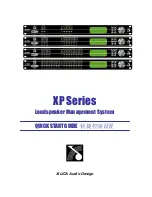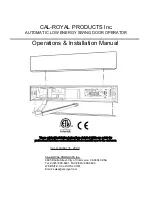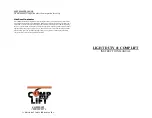
OM-229 930 Page 3
1-3. Engine Hazards
BATTERY EXPLOSION can BLIND.
Always wear a face shield, rubber gloves, and
protective clothing when working on a battery.
Stop engine before disconnecting or connect-
ing battery cables or servicing battery.
Do not allow tools to cause sparks when working on a battery.
Do not use welder to charge batteries or jump start vehicles.
Observe correct polarity (+ and
−
) on batteries.
Disconnect negative (
−
) cable first and connect it last.
FUEL can cause fire or explosion.
Stop engine and let it cool off before checking or
adding fuel.
Do not add fuel while smoking or if unit is near
any sparks or open flames.
Do not overfill tank — allow room for fuel to expand.
Do not spill fuel. If fuel is spilled, clean up before starting engine.
Dispose of rags in a fireproof container.
Always keep nozzle in contact with tank when fueling.
MOVING PARTS can injure.
Keep away from fans, belts, and rotors.
Keep all doors, panels, covers, and guards
closed and securely in place.
Stop engine before installing or connecting unit.
Have only qualified people remove doors, panels, covers, or
guards for maintenance and troubleshooting as necessary.
To prevent accidental starting during servicing, disconnect
negative (
−
) battery cable from battery.
Keep hands, hair, loose clothing, and tools away from moving
parts.
Reinstall doors, panels, covers, or guards when servicing is
finished and before starting engine.
Before working on generator, remove spark plugs or injectors to
keep engine from kicking back or starting.
Block flywheel so that it will not turn while working on generator
components.
EXHAUST SPARKS can cause fire.
Do not let engine exhaust sparks cause fire.
Use approved engine exhaust spark arrestor in
required areas — see applicable codes.
HOT PARTS can cause severe burns.
Do not touch hot parts bare handed.
Allow cooling period before working on equip-
ment.
To handle hot parts, use proper tools and/or
wear heavy, insulated welding gloves and
clothing to prevent burns.
STEAM AND HOT COOLANT can burn.
If possible, check coolant level when engine is
cold to avoid scalding.
Always check coolant level at overflow tank, if
present on unit, instead of radiator (unless told
otherwise in maintenance section or engine
manual).
If the engine is warm, checking is needed, and there is no over-
flow tank, follow the next two statements.
Wear safety glasses and gloves and put a rag over radiator cap.
Turn cap slightly and let pressure escape slowly before
completely removing cap.
Using a generator indoors CAN KILL
YOU IN MINUTES.
Generator exhaust contains carbon monoxide.
This is a poison you cannot see or smell.
NEVER use inside a home or garage, EVEN IF
doors and windows are open.
Only use OUTSIDE and far away from windows, doors, and
vents.
BATTERY ACID can BURN SKIN and EYES.
Do not tip battery.
Replace damaged battery.
Flush eyes and skin immediately with water.
ENGINE HEAT can cause fire.
Do not locate unit on, over, or near combustible
surfaces or flammables.
Keep exhaust and exhaust pipes way from
flammables.
1-4. Hydraulic Hazards
HYDRAULIC EQUIPMENT can injure
or kill.
Incorrect installation or operation of this unit
could result in equipment failure and personal
injury. Only qualified persons should install, op-
erate, and service this unit according to its
Owner’s Manual, industry standards, and na-
tional, state, and local codes.
Do not exceed the rated output or capacity of the hydraulic pump
or any equipment in the hydraulic system. Design hydraulic sys-
tem so failure of any hydraulic component will not put people or
property at risk.
Before working on hydraulic system, turn off and lockout/tagout
unit, release pressure, and be sure hydraulic pressure cannot be
accidentally applied.
Do not work on hydraulic system with unit running unless you are a
qualified person and following the manufacturer’s instructions.
Do not modify or alter hydraulic pump or manufacturer-supplied
equipment. Do not disconnect, disable, or override any safety
equipment in the hydraulic system.
Use only components/accessories approved by the manufacturer.
Keep away from potential pinch points or crush points created by
equipment connected to the hydraulic system.
Do not work under or around any equipment that is supported only
by hydraulic pressure. Properly support equipment by mechanical
means.
Содержание TRAILBLAZER 302 AIR PAK
Страница 45: ...OM 229 930 Page 41 SECTION 9 GENERATOR ENGINE MAINTENANCE 9 1 Maintenance Label ...
Страница 52: ...OM 229 930 Page 48 10 2 Compressor Maintenance Label ...
Страница 62: ...OM 229 930 Page 58 SECTION 13 ELECTRICAL DIAGRAMS Figure 13 1 Circuit Diagram For Welding Generator ...
Страница 63: ...OM 229 930 Page 59 228 867 F ...








































